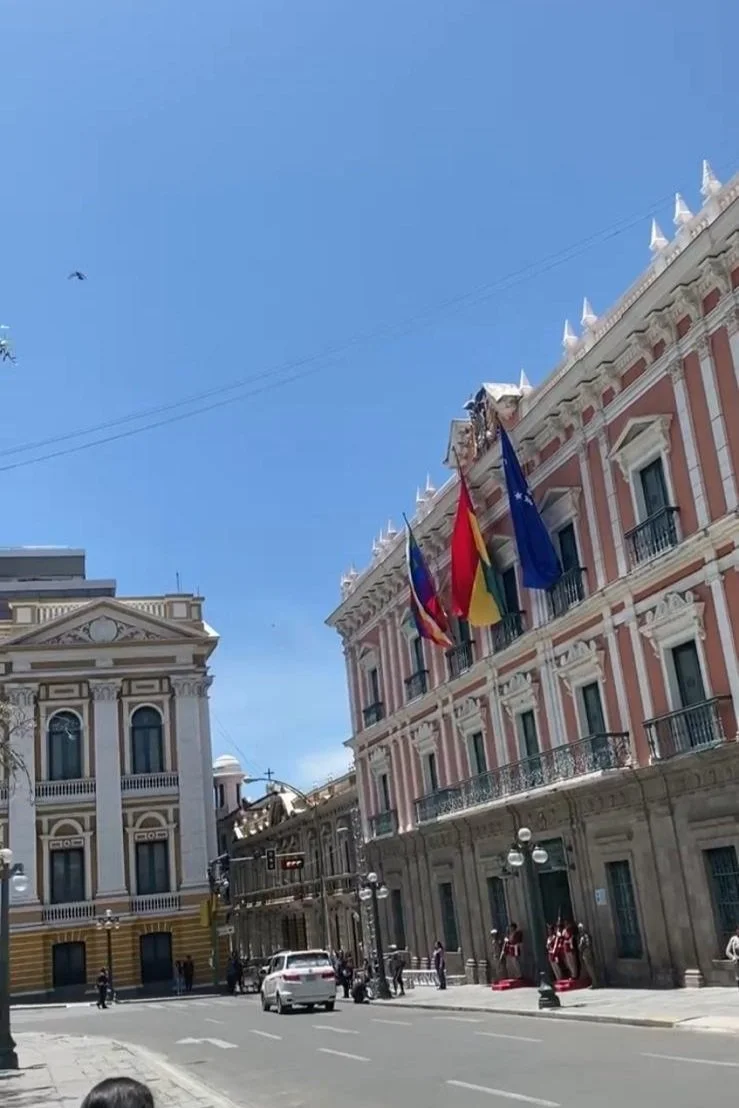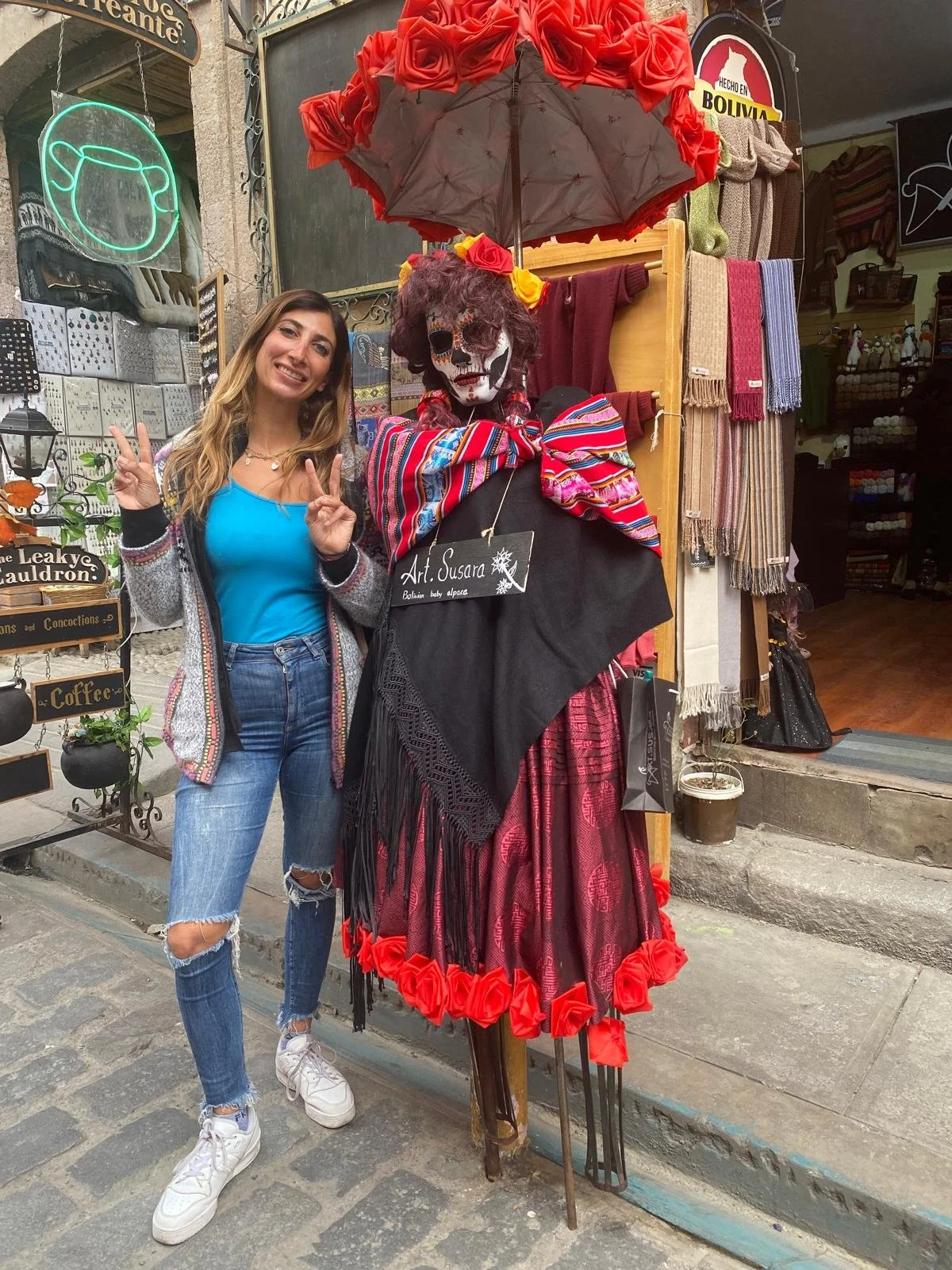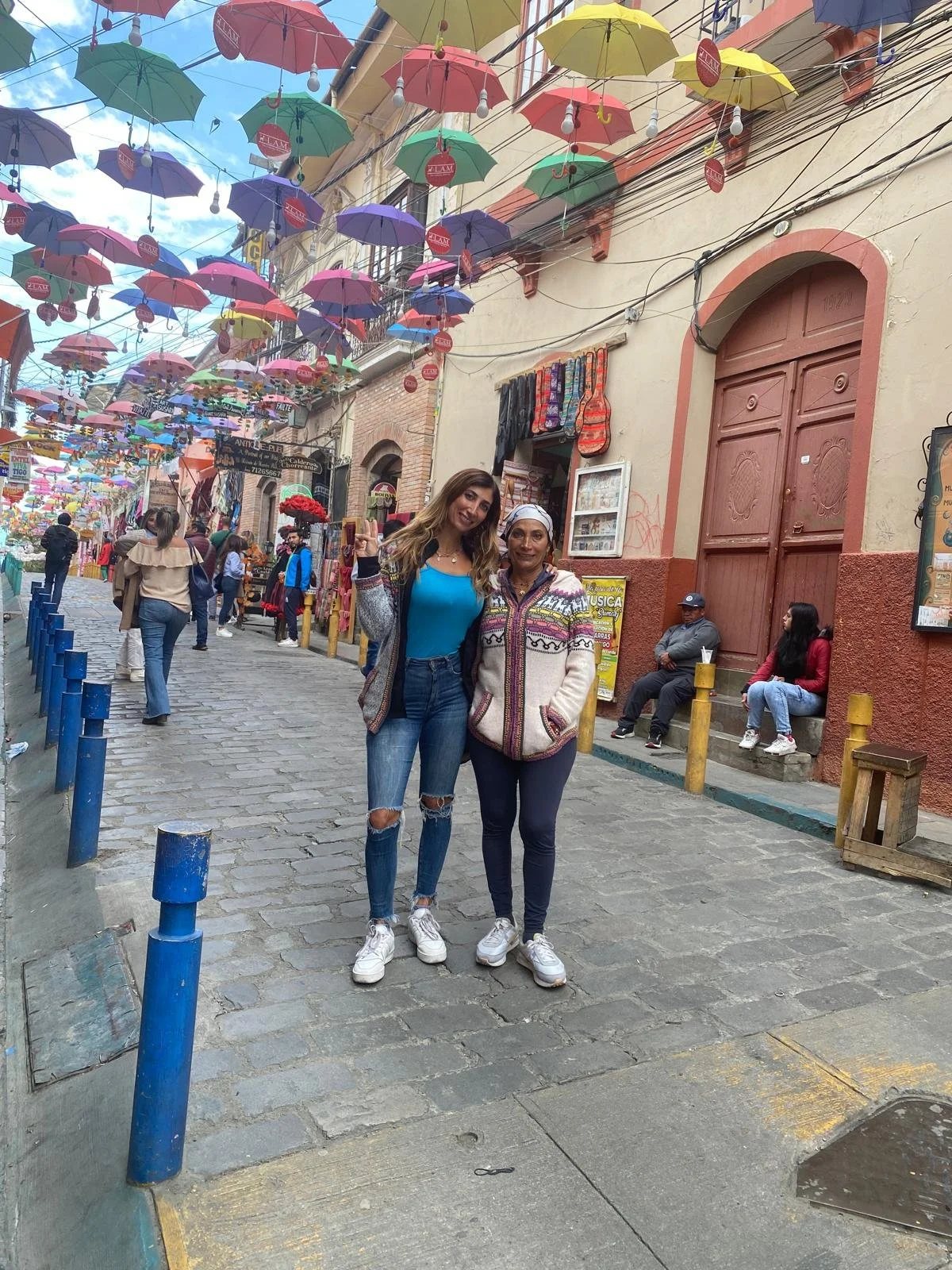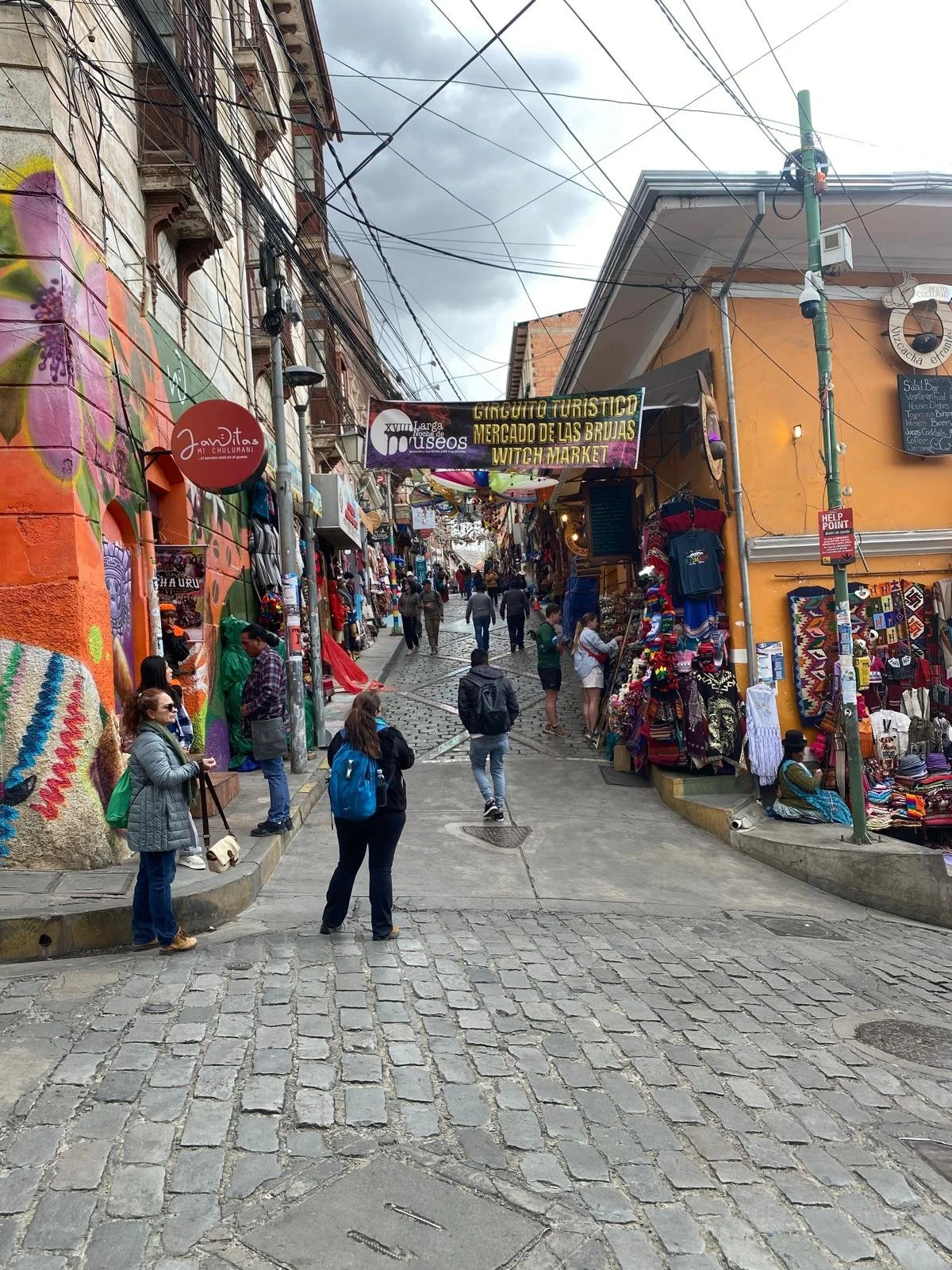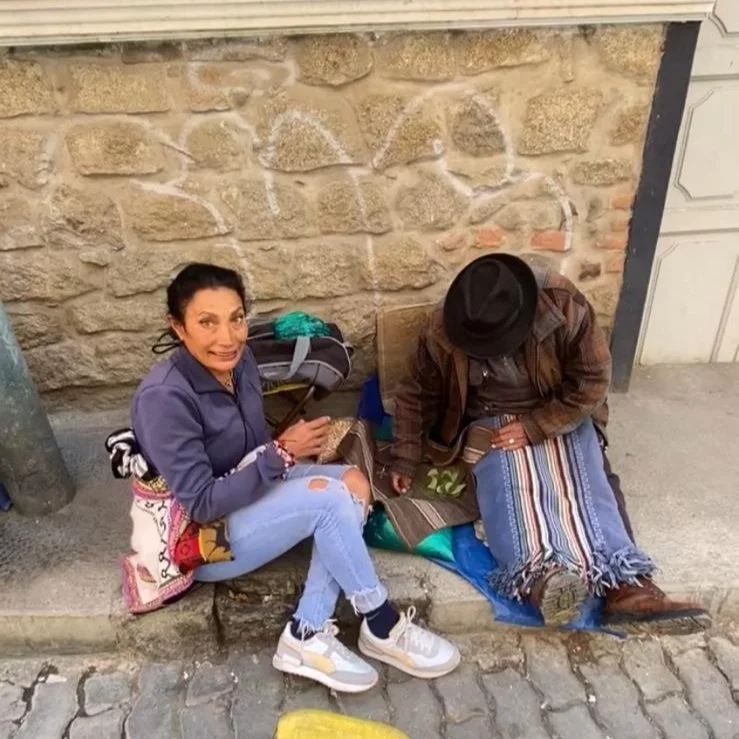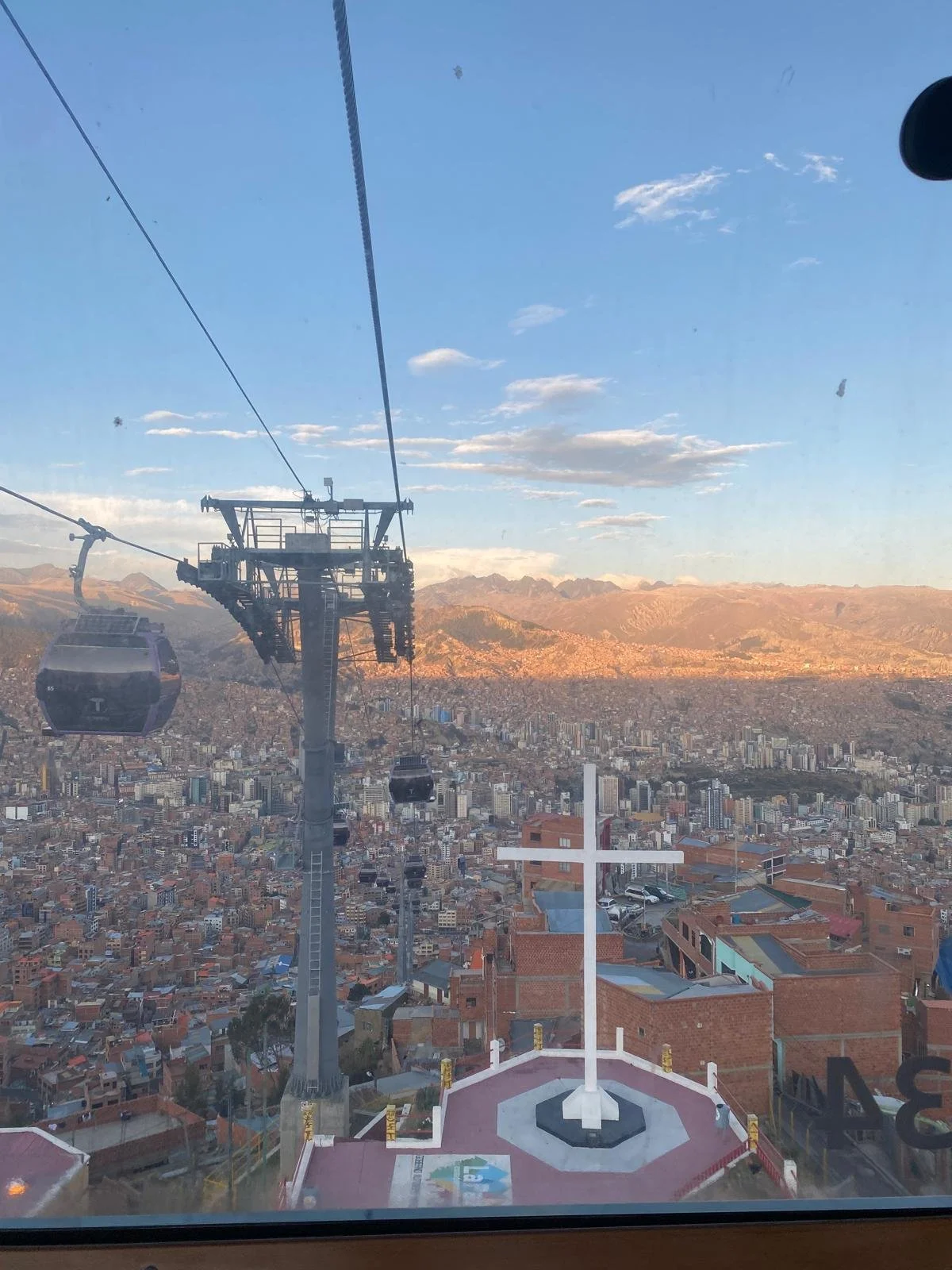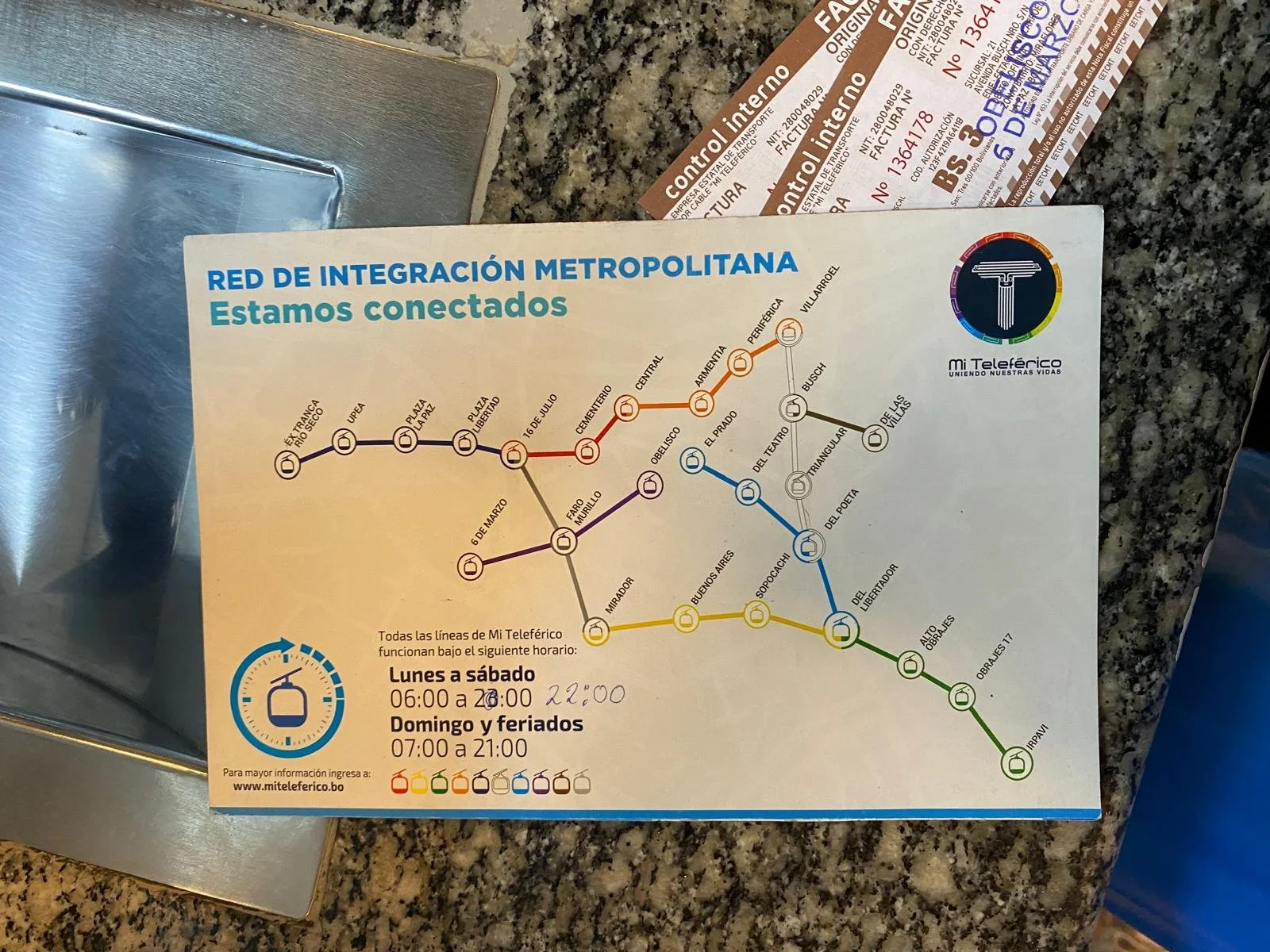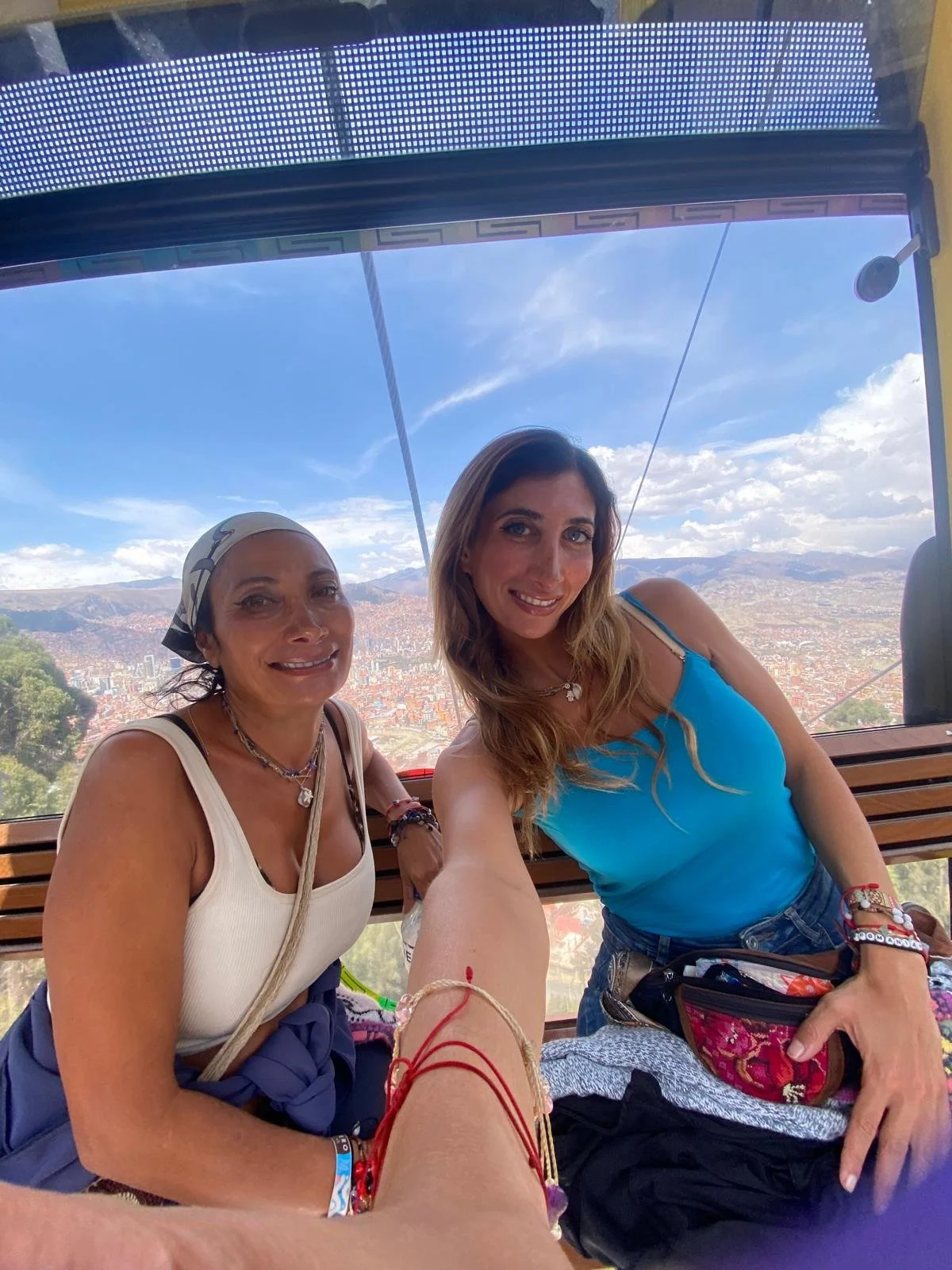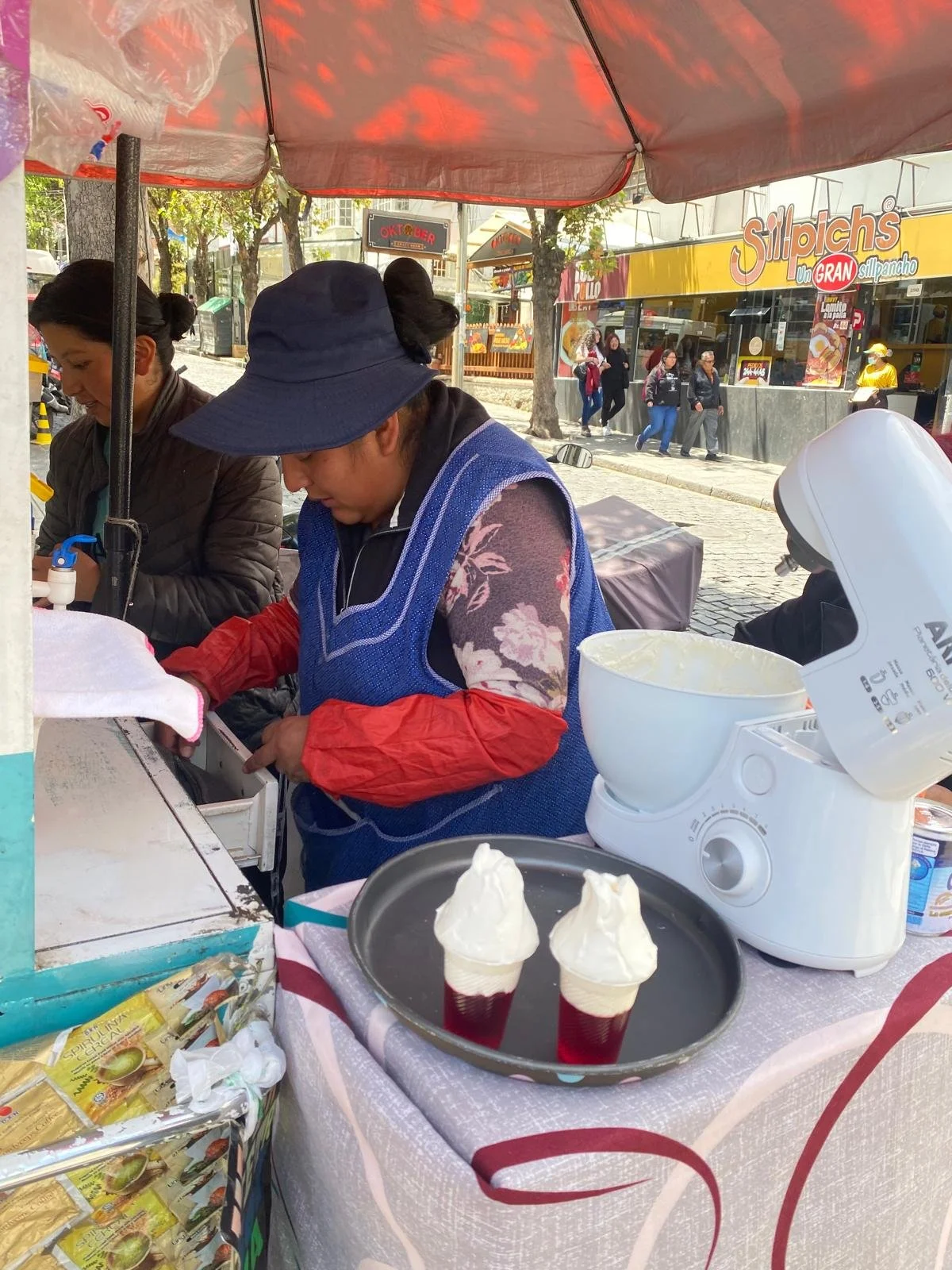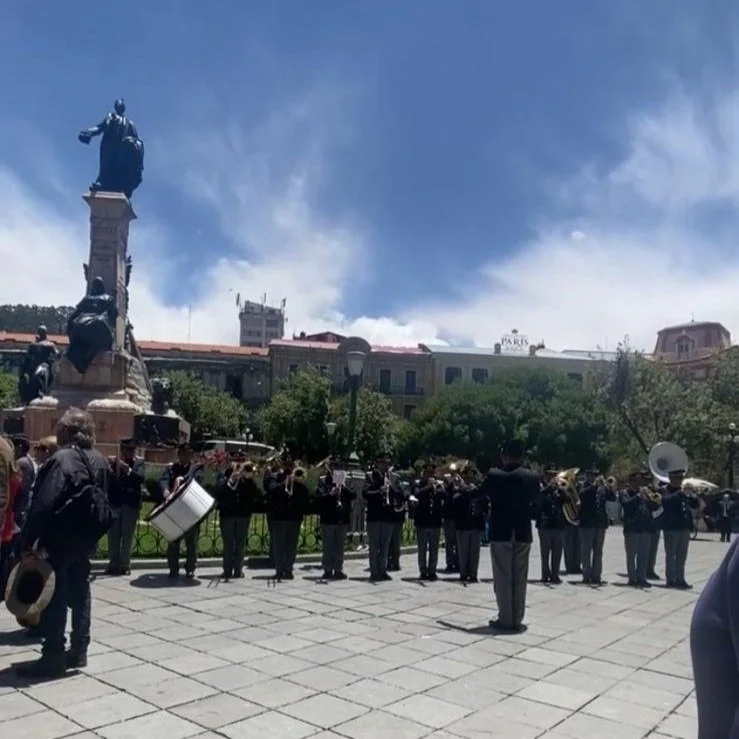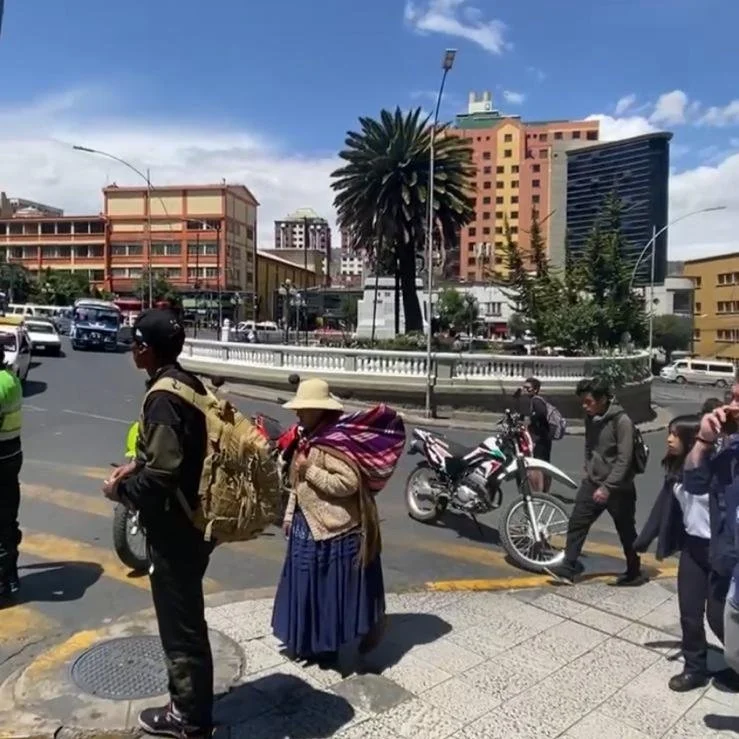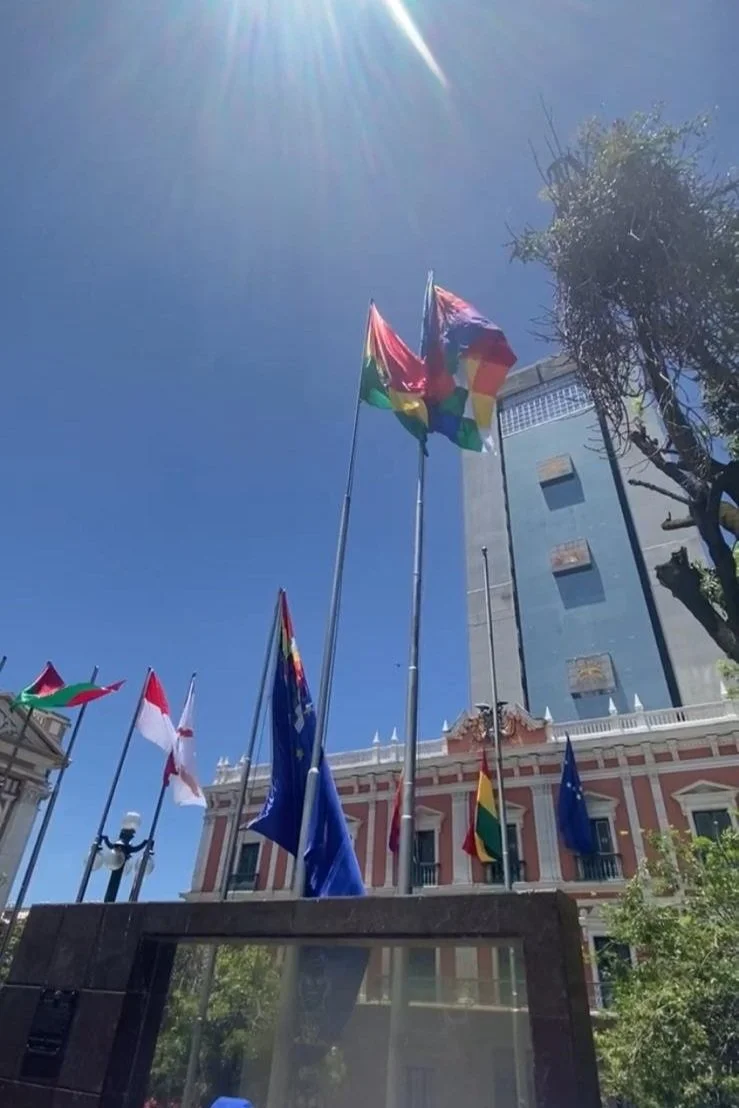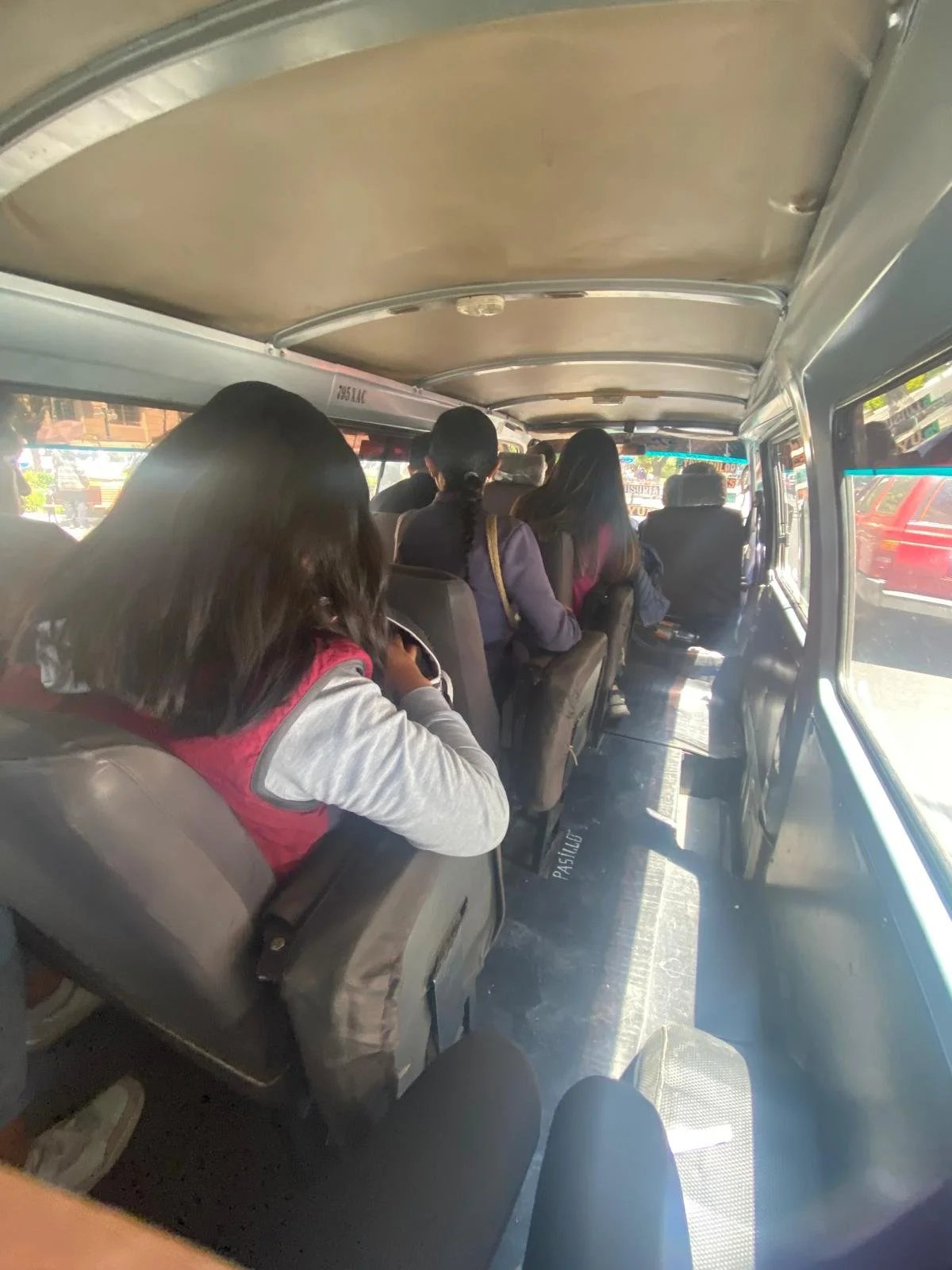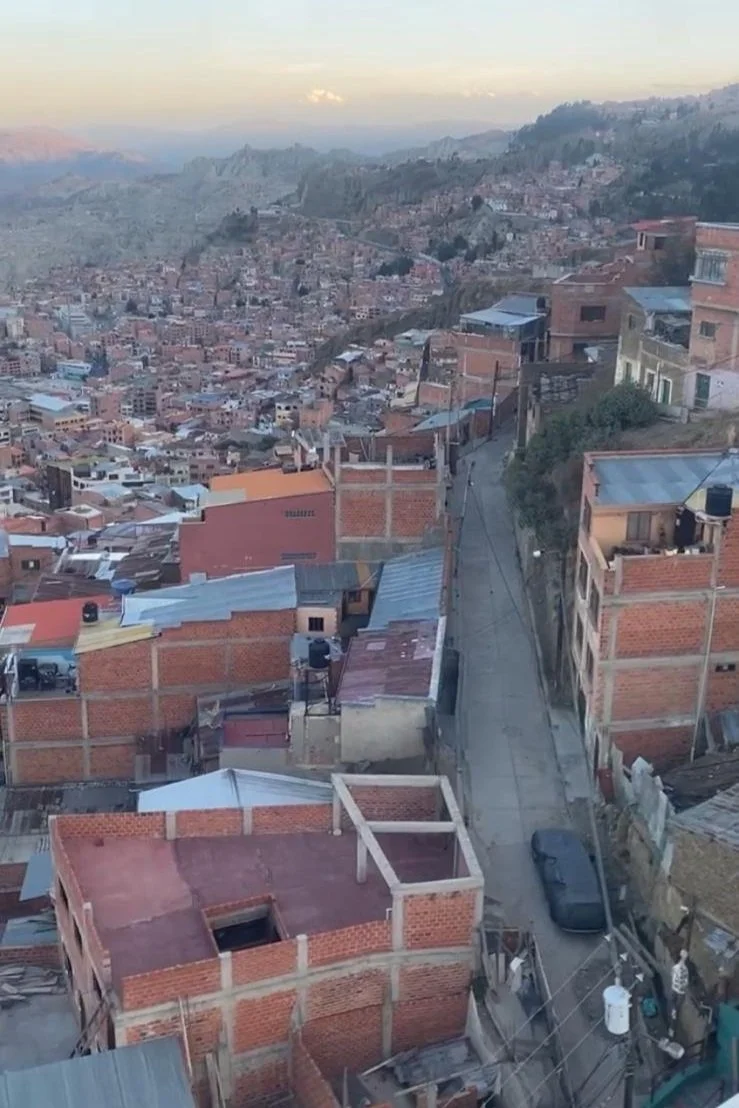La Paz: Bolivian Indigenous, ‘Brujas’ Witches Market and Coca Leaves Reading.
The Brujas Market, “EL Mercado de Las Brujas”, sitting with the yatiri for a coca leaves reading in La Paz, Bolivia.
La Paz is the administrative capital of Bolivia. It is located in west-central Bolivia, in the low part of the Amazon Basin, surrounded by the high mountains of Altiplano. La Paz is the highest capital city in the world. Today, there are roughly 2.2 million people in La Paz.
Governmental building in the streets of La Paz, the administrative capital of Bolivia.
Touring La Paz is very interesting. You have many different neighborhoods that are each unique. La Paz is considered the international location for banks, hotels, accounting firms, and universities. In the San Jorge neighborhood, you can find embassies of different countries and the offices of the World Bank and other international institutions. From the hotel that we stayed in the neighborhood of Sopocachi, we had a very nice view of the vibrant busy streets and local food vendors.
The colorful and vibrant tourist market with traditional indigenous Bolivian artisenal in La Paz, Bolivia.
We were able to walk to the famous local district of the Witches Market ‘El Mercado de Las Brujas”, located in the Cerro Cumbre mountain clearing in La Paz, Bolivia.
Brujas witch statue in the El Rosario neighborhood mercado of La Paz, Bolivia.
Strolling the beautiful streets of La Paz, Bolivia.
Entrance of the Mercado de Las Brujas in La Paz, Bolivia.
This market is very famous, full of stores with traditional clothing, traditional sacrifices, herbs used by the Brujas to do all kinds of magic. This market is known for its tourism. You can witness witch doctors known as “yatiri” selling their medical plants, doing rituals, fortune-telling, love and magic curses. The Yatiri sit on the floor or in the corner of the streets, they can be identified by those wearing black hats. They do some of the rituals and reading based on coca leaves.
Mercado de Las Brujas, coca leaves reading by the traditional yatiri in the El Rosario neighborhood of La Paz, Bolivia.
Traditional sacrifice for Pachamama, Mother Earth, such as the llama fetus, which are buried underneath the house for good luck.
Traditional indigenous woman in the market of La Paz, Bolivia.
This part of the city is very unique for the markets, colourful street decor and is also famous for where a ritual of Pachamama occur, which is the sacrifice for Mother Earth.
The views of the neighborhoods of La Paz, Bolivia, from the cable car.
Seeing other parts of the city can be done by riding the cable cars. The cable cars are functioning as the local transportation as a metro system. La Paz is built from down to up, therefore, the cable cars go so high up to the neighborhoods that it can be really scary to ride if you are afraid of heights.
The views of the neighborhoods of La Paz, Bolivia, from the cable car.
Cable Car ‘Teleferico’ Routes of La Paz, Bolivia.
We enjoyed riding the cable cars all over the city to be able to see the city and the surrounding neighborhoods. It was nice to be able to converse with the local Bolivians on the rides as well.
Enjoying the sceneic ride on the ‘teleferico’ cable car ride in La Paz, Bolivia.
In La Paz, we enjoyed the street food. Overall, we stuck to eating simple foods such as bread, cheese, fruits but not meat. In the local markets, we were able to buy fresh fruits and vegetables. It was really cheap and enjoyable.
Hand-made whipped cream with jelly in the street of La Paz, Bolivia.
The local market, fruits, vegetables and medicinal herbs by local indigenous Bolivians in La Paz, Bolivia.
La Paz has a lot of festivals during the year, such as educational festivals, Pachamama festivals, arts and crafts festivals, and food festivals.
Army band playing in Plaza Murillo, La Paz, Bolivia.
The population in La Paz are combined of local Bolivians, indigenous and internationals who reside there for their work. La Paz is very clean, the municipality maintains the streets and the parks in very good way. The local population is very nice and accommodate tourists.
Mix of indigenous and local Bolivians in the streets of La Paz, Bolivia.
Traditional Bolivian flags in Plaza Murillo, La Paz, Bolivia.
The mini buses in La Paz can take you everywhere in the city but for the highest points of the neighborhoods, its better to take the cable cars.
Riding the mini van with local Bolivians and indigenous in La Paz, Bolivia.
I felt safe walking around in the neighborhood where we stayed, Sopocachi, and also in the markets, while using the local mode of transportation around the city. There are areas that are not recommended to walk by foot, which are less developed areas of the city. We recommend to do some research before exploring on your own.
Traditional indigenous men walking the streets of La Paz, Bolivia.
La Paz is well connected to other parts of Bolivia by bus. Before taking other transportations out of the city of La Paz, it is best to check that there are no roadblocks on the way to your next destination.
The views of the neighborhoods in La Paz, Bolivia from the ‘Teleferico’ cable car ride.
Brujas statue in the Mercado de Las Brujas, witch market, in La Paz, Bolivia.
We enjoyed exploring the beautiful city of La Paz and recommend it for tourists who want to discover Bolivia.


